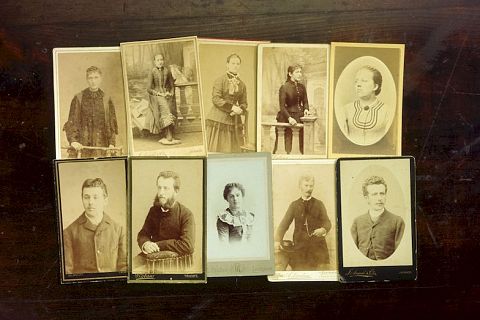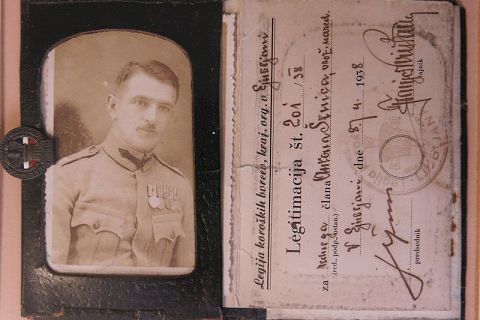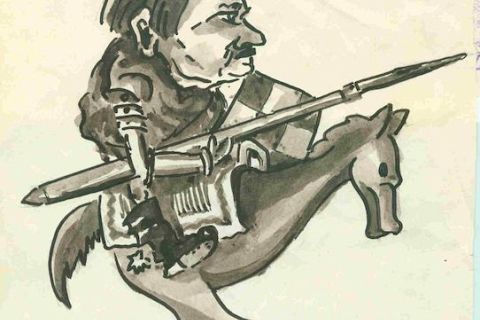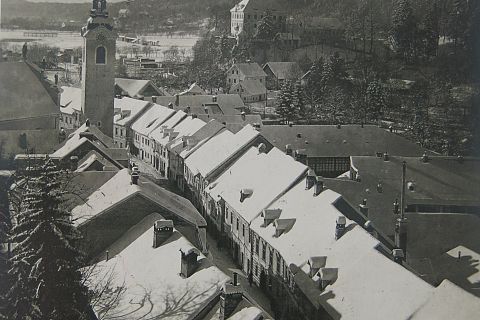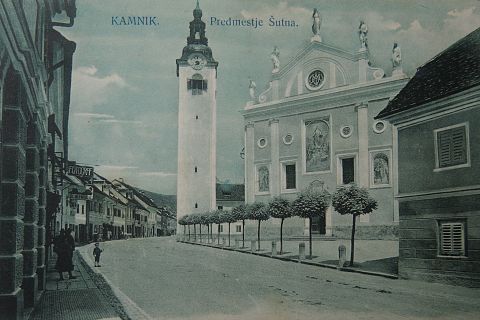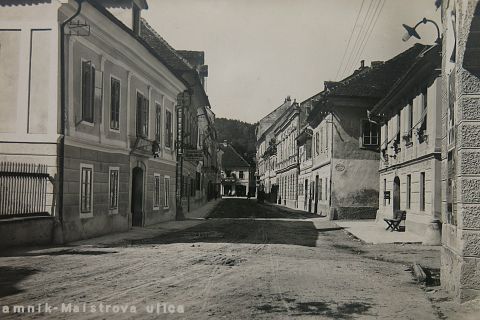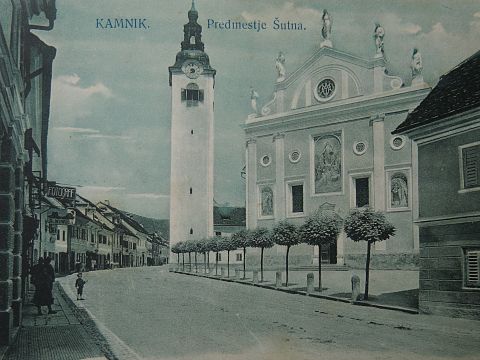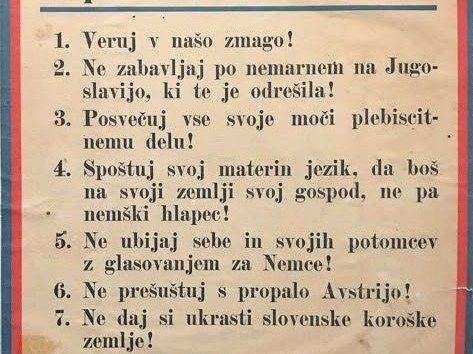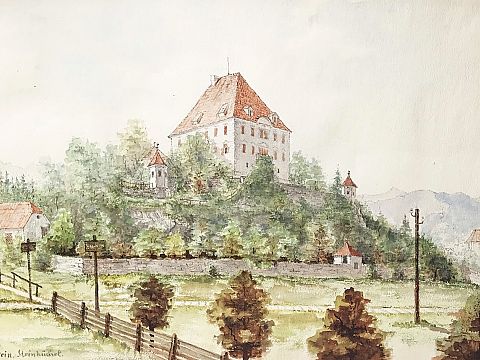- Info MM:K
Contact
Muzejska pot 3, 1241 Kamnik, Slovenia
+386 (0)1 8317 662
info@muzejkamnik.siDŠ: 92474519
MŠ: 5095417000
TRR: SI56 0110 0600 0057 156Opening hours MM:K
Opening hours for visitors:
Tuesday-Saturday: 10.00 – 18.00,
Sunday, Monday and holidays: closedMuseum – Zaprice Castle is from 15.4. until 15.9.2025 also open on Sundays from 10 a.m. to 2 p.m.

- Events & News
- Exhibitions
- Units
- Collections
- Education
- Shop
- About MM:K
History collection
The History Collection consists of museum objects and non-material cultural heritage, such as informants’ notes, photo collections, collection of postcards, collection of photographic material of the Aparnik studio, Zika’s heritage, material presenting some important people and their heritage, photo albums from World War I, a collection of posters, a collection of documents and small objects from various materials (orders, souvenirs etc.).
Contact:
Curator: Zora Torkar, historian and ethnologist, museum counsellor
zora.torkar@guest.arnes.si
Professor of French language and literature, Ivan Zika (1908-1976), worked as a professor from 1936 to 1973, from 1947 he taught at Kamnik secondary school. In his spare time he occupied himself by exploring Kamnik local history and the history of chess playing in Slovenia. On the initiative of Francka Zika, the sister-in-law of Ivan Zika, the Kamnik Museum in 1987 recorded the preserved heritage and took it over. The heritage now comprises a very important photo collection and newspaper library. The photo collection offers an insight into the social life of Kamnik from the end of the 19th century to the mid-1970s. Zika’s newspaper library is today one of the most often used sources for exploring Kamnik history, providing the researchers with the quickest way to examine the newspaper articles. The heritage includes Zika’s notes, his personal documents, correspondence and books. Professor Ivan Zika could be named the polymath of the new age and it couldn’t be more appropriate that a significant part of his life’s work is kept in the museum, readily available to researchers and history lovers.
The Aparnik studio was a centre of photography in Kamnik for more than half a century, from 1895 to 1953. First they were created by the father, Franc Aparnik, and after 1929 by his son, Stane. As for his subjects and work, Franc Aparnik was very open-minded and we can say that no event happened without him photographing it, and thus preserving for today. A relevant part of Aparnik’s photographic work was postcards. His opus was very rich also due to the fact that until World War I Kamnik was a well-known health and spa resort in Kranjsko (Carniola) region. So the first postcards with the subject of Kamnik health resort date back to 1896. Aparnik made a great number of his postcards after the year 1905. The majority of his first postcards, made up to 1918, were black-and-white and later coloured with hand made printing plates. In the 1930s the market for postcards was even greater. The subject was recorded on a glass plate and then contact-copied, whereas the text on postcards was written by hand. The collection consists of glass photographic plates and negative film, the collection of postcards (which is a significant reflection of the time in which they were made), photo albums and painted backgrounds from the former photo studio.
Museum stories
Membership card of the Legion of Carinthian fighters, 1938
Maister’s fighters for the northern border of 1918-1919 began to connect and to participate in various organizations from 30s of the 20th century. According to the data collected so far, little less than a hundred volunteers have been involved in the battles for the northern border from the Kamnik-Domžale region.
Franc Aparnik, Kamnik's Suburbs Sutna, postcard, around 1930
The postcard depicts a view of the typical trade and commercial suburb of Sutna from south to north: on the left there are signs for Aparnik's photographic craft and further trade with clothing and hats Vivoda; on the right is Rudolf Maister's birth house and the magnificent parish church with a bell tower and a renovated facade with Toman’s statues made in 1909. The postcard is green tinted, the publisher was the photographer Franc Aparnik himself but was not dispatched.
Ten plebiscite commands for Slovenes, propaganda leaflet, 1920
The leaflet was part of the Slovene plebiscite propaganda in Carinthia in 1920. It is shaped in the manner of the ten God's commandments which the Slovenes in Carinthia should keep in relation to the German neighbours and, of course, about their decision on the plebiscite.
Ernst Mayer, Castle Zaprice, watercolour, around 1880
Ernst Mayer was born in Himmelberg in today's Austrian region of Carinthia on May 28, 1839, and died in Rijeka in Croatia on February 14, 1926. The Intermunicipal museum Kamnik bought Mayer's sketchbook and 40 watercolours, which refer to Kamnik in the 80's of the 19th century.
Pentateuch (Moses' books), 1578
It is one of the few preserved Protestant prints in Slovenia. It is still kept at the Franciscan monastery in Kamnik. Only six of them are preserved in the world, this was found by Josip N. Sadnikar in Kneže in Carinthia. It was published by printer Mandelc in Ljubljana in 1578.
Relief with an angel carrying a coat of arms, around 1490
An important turning point in the city self-government was the year 1489, when Emperor Friderik III. allowed the Kamnik citizens free election of city judges. After the issue of privilege the town of Kamnik wanted to thank the Emperor's House with a relief.
The framework of the diploma received by Rudolf Maister, 1924
This is the framework of the diploma received by Rudolf Maister in 1924 as honorary citizen of Kamnik. On the occasion of the 50th anniversary, on 15 April 1924, under the leadership of Mayor Rihard Karba, the town of Kamnik gave Rudolf Maister a diploma of honorary citizen. According to the proposals by Josip N. Sadnikar, it was painted by Maksim Gaspari, while Ivan Klemen carved a golden frame with the Kamnik’s coat of arms.
The first national holiday in Kamnik, October 29, 1918
The photograph on the card, taken by Kamnik professional photographer Franc Aparnik, shows famous Kamnik’ citizens who were photographed in national costumes on the occasion of the proclamation of the State of Slovenes, Croats and Serbs on October 29, 1918, on the main square in Kamnik.
Tanner Craftsman’s house Mark, 1549
In the lapidary of the Intermunicipal museum Kamnik is preserved tanner craftsman's house mark from Kamnik. The central part represents the frame in relief. On the left edge of it are the stonecutter's mark and the letters TA, and on the right edge are MA. Below them is a leather knife for skin cleaning.
Landmark of the Kamnik City Territory, 18th Century
The museum's collection preserves the landmark of the Kamnik city territory, probably from the 18th century, with the engraved inscription Der Stat Stain Purgfrid. It was transported to the museum in the sixties from the outbuildings and stables of the inn Kristof in Kamnik. It is one of the few preserved monuments of legal character from the city's past.
Mint coins from Kamnik, 13th century
Coin mint money from the time of Henry IV. Andechs (1204–1228) and Frederick II. Babenberg (1230–1243). At least since 1195, the Andechs Mint of Money was mentioned in Kamnik and was influenced by the mint of the Patriarchs of Aquileia and the Archbishops of Salzburg. After 1220 they also minted money with the inscription CIVITAS STAIN.
Janez V. Valvasor, The Glory of the Duchy of Carniola, 1689
The Glory of the Duchy of Carniola (Die Ehre des Herzogthums Krain) is the most important and greatest scientific work of Janez V. Valvasor (1641-1693), published in 1689 by the printer Endter in Nuremberg.
Flag of the National Reading Room (Narodna čitalnica) in Kamnik, 1873
The flag of the National Reading Room (Narodna čitalnica) was embroidered by the ladies of Kamnik, and it was ceremoniously taken over by the readers on July 27, 1873.
Jurij Japelj, Blaž Kumerdej, The Bible of the New Testament, II. Part, 1786
Japelj and Kumerdej first published the New Testament in two books (1784, 1786). Despite some criticism, this is the first Catholic translation of the Bible in Slovene language, which was published almost two hundred years after the Protestant one.



